
views
Training without an Instructor
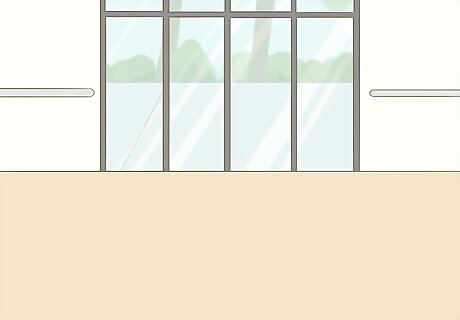
Find a space where you can stretch and practice every day. An ideal practice space has hard flooring, plenty of room for movement, and a large mirror to practice in front of. If you’re training at home, the “ideal” space might not be available, so work with what you’ve got! Most importantly, you need ample space to move around. Choose a space that's well-lit for your own safety. Carpeted floors are fine if that’s all you have. You could even dance outside in the grass as long as the ground is flat. It’s best to find a place that’s relatively private so you can dance without interruption or prying eyes.
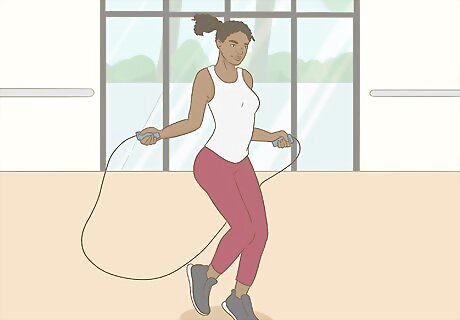
Warm up for 5-10 minutes before training sessions to prevent injury. Since you’re training without an instructor, it’s crucial that you warm up and stretch properly to avoid hurting yourself. You can jog in place, do jumping jacks, or skip rope to warm up for a training session. The goal is to gently raise your heart rate and stimulate your muscles. Keep your eye on the clock or set a timer on your phone to ensure you warm up for the full 5-10 minutes.
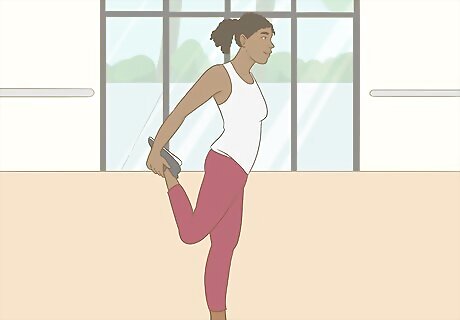
Stretch for at least 30 minutes a day to improve your flexibility. Hold each stretch for 10-15 seconds. Never push yourself into a stretch that you can’t hold. Try to fit your 30-minute stretching session in whenever you can—stretching in front of the television is still stretching! Try doing the butterfly stretch to loosen up your inner thighs. Other leg stretches, like hamstring and quadriceps stretches, are also crucial. To stretch your arms and shoulders, start by standing with your feet shoulder width apart. Then, bend your right arm at the elbow and reach behind your back as far to your left side as possible. You can gently grab your right forearm with your left hand to increase the stretch. Hold for 15 seconds and repeat on the other side. Always stretch before and after your training sessions. You can hold stretches for 30 seconds after training, since you’re already warmed up. A lot of flexibility can be gained during the post-training stretching session! Consider taking up yoga to increase your flexibility and strength.
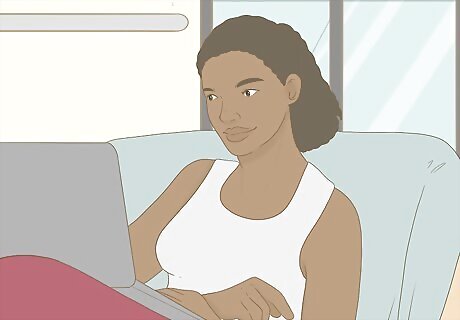
Learn choreography by watching free video tutorials online. There are tons of tutorials available on YouTube, so run a search and pick songs and artists that interest you. Don’t limit yourself to “professional” stage dancers—pop stars who incorporate choreography into their videos and concerts are great sources. Their signature dances are iconic for a reason! For example, look up choreography tutorials for specific artists and songs like: Justin Timberlake’s “Suit and Tie,” Ariana Grande’s “Problem,” Beyonce’s “Single Ladies,” and Katy Perry’s “Dark Horse.” Don't be afraid of classic stuff like Michael Jackson’s “Thriller,” as well.
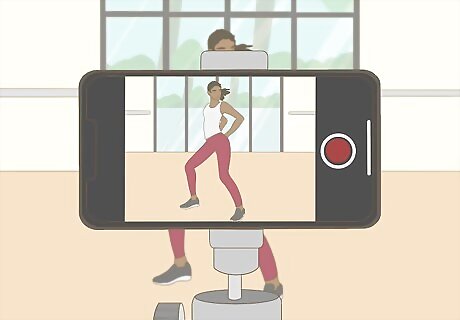
Record training sessions and use them to improve your movements. Set up your smartphone to record yourself when you’re training. After the training session, review the videos to pinpoint areas you need to work on. It can be a little awkward to watch and analyze videos of yourself, but the information you can get from doing this is invaluable. Avoid criticizing yourself too harshly as you review your videos. Everyone starts as a beginner.Tip: You can also show your videos to someone you trust for honest feedback about your skills. Try to find someone who's familiar with dance for the best results.
Learning Contemporary Dance Moves
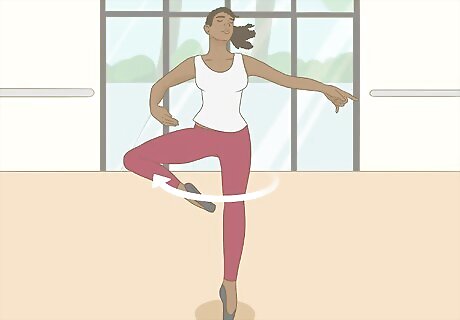
Work on your pirouette. You should be familiar with ballet, jazz, and modern dance if you want to be a contemporary dancer as it is a fusion of those dance styles. Stand in fourth position. Bend your knees and push off of your back leg. Bring up 1 leg and point your foot toward your knee. Then, hold the foot there as you perform a complete turn. End by placing your foot back on the floor in fourth position. To get into fourth position, stand on the floor and place 1 foot about 12 inches in front of the other. Both feet should be flat on the ground and turned out. Balance your weight evenly between them. Keep your support leg nice and straight as you rotate your body. This is typically considered to be a ballet movement, but it’s important in contemporary dance, as well.
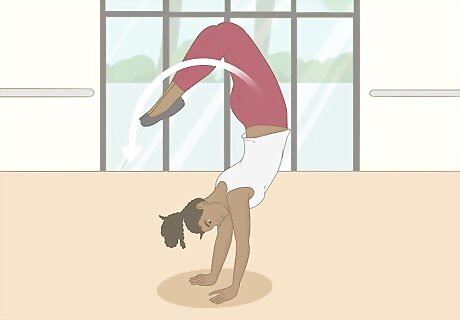
Perfect your front limber. Start by doing a handstand. Once you feel balanced in the handstand, arch your feet and let your lower body follow. Then, kick over until your feet are on the ground. You might want to practice with someone spotting you at first.
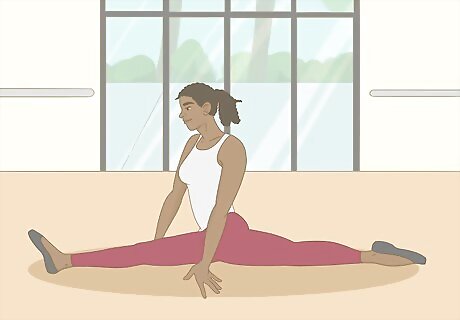
Learn how to do the splits. The splits are popular in dance routines because they look so impressive! Get into a deep lunge position, then lower your body to the ground, placing your hands on the floor beside you to balance yourself. Straighten your lead leg out as much as possible and push your hips to the floor. Start slowly and only stretch as far as your body will allow. Routinely practicing this every day will make it easier and easier.
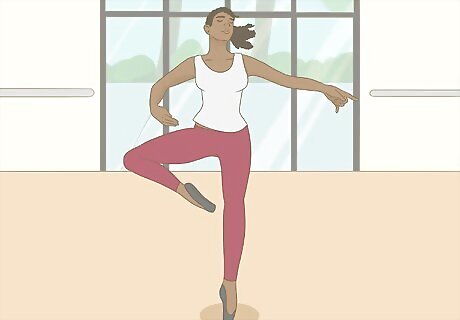
Work on fluid, expressive movements. Unpredictability, expression, and freedom in choreography are the hallmarks of contemporary dance. As a dance genre, it rejects a lot of the rigorous movements common in ballet and other structured forms of dance. Practice fluid motions that lead smoothly into each other. Try to communicate emotion through your movements.Tip: It can help to find a piece of music that affects you on a deep, emotional level.
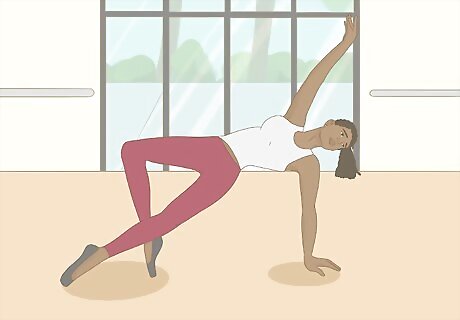
Try to choreograph your own short dance piece to a favorite song. Once you've learned some moves and are feeling confident about what you can do, start putting together a short piece of your on choreography. Taking a few moves from some of your favorite dance performances and piecing them together is a good place to begin! For example, you might start in fourth position, move into some simple step work, and add expressive arm movements. Then, pirouette, plie, and snap your legs back together before dropping down into the splits. Try to create facial expressions to match the mood of your dance. Remember to tap into your emotions as you create moves.
Getting Experience as a Dancer
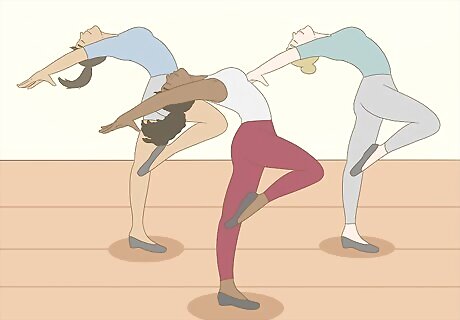
Join school dance productions if you’re still a student. Many schools have free dance clubs that you can join to gain experience without taking formal lessons. Theater productions often include dance sequences, so check with your school’s drama club about upcoming opportunities. If the drama club doesn't perform dance currently, consider joining the club and starting the tradition!
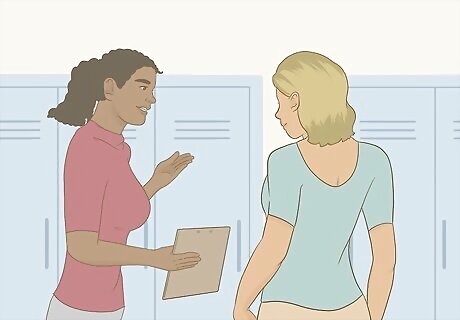
Start an extracurricular dance club at your school. Find out if anyone else is interested in participating, then petition to start a dance club at your school. That way, you can use the school’s stage and gym to practice and eventually put on performances as a group. Learning how to collaborate and work as a team are important skills for dancers. Working with a tight-knit group means you will have support. The club members will understand what you’re going through as you train.

Check out dance opportunities with local theater companies. If your local theater company puts on productions with dance sequences, get information on how to audition. This can be a great opportunity to get experience dancing on a stage in front of a crowd. There’s really no substitute for the experience gained in a live performance setting.Tip: If you feel close to anyone in your local theater company, especially another member who knows dance, consider asking them to be your mentor.




















Comments
0 comment